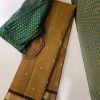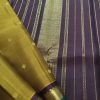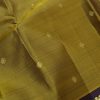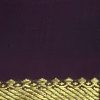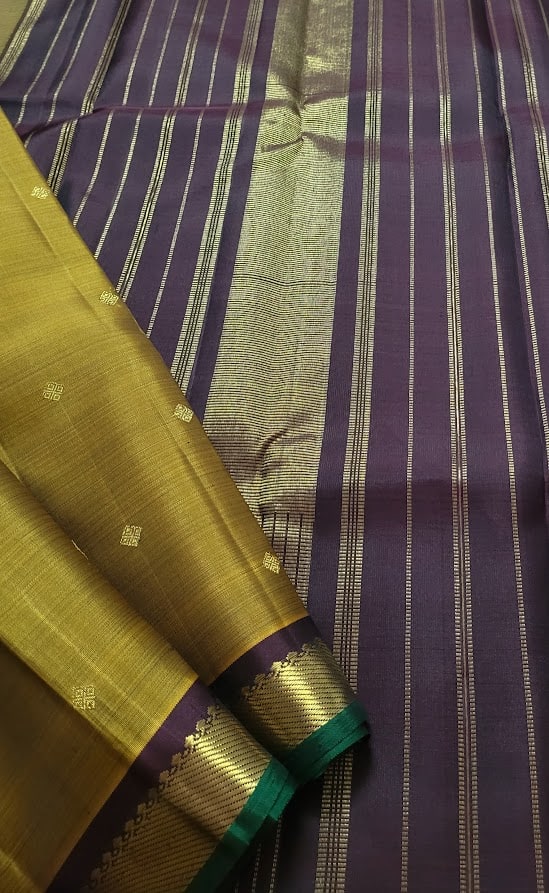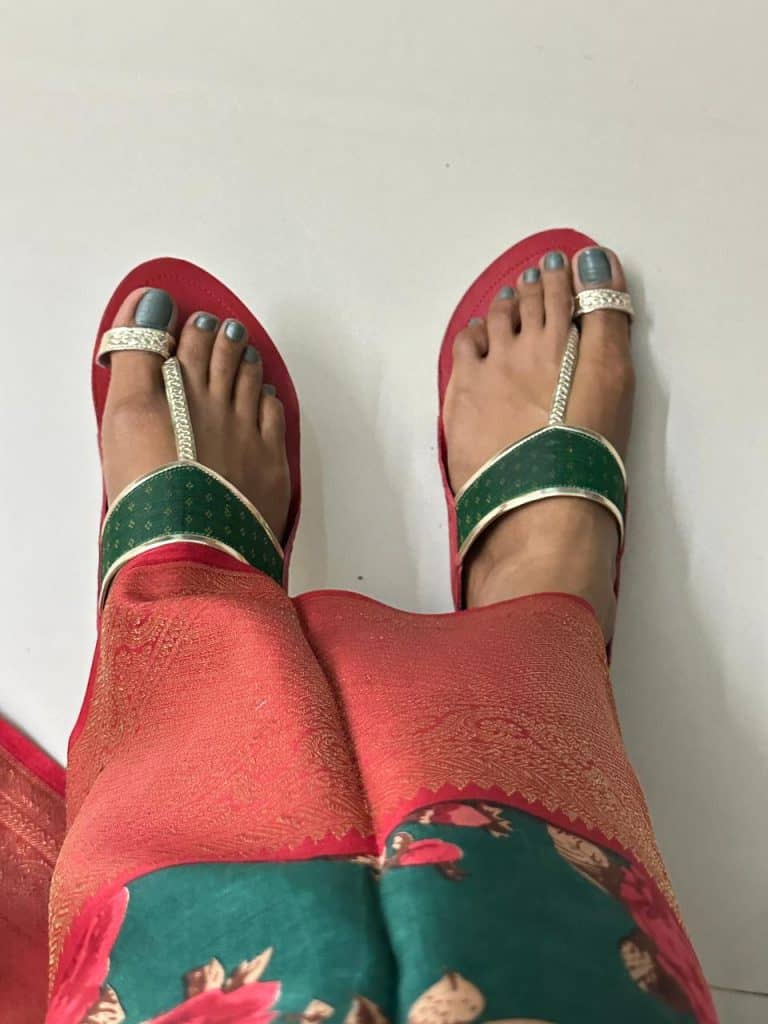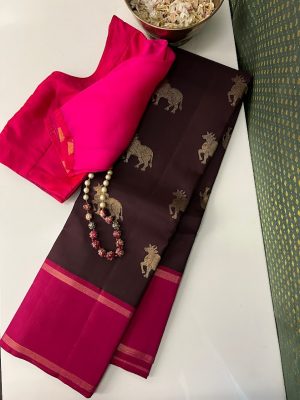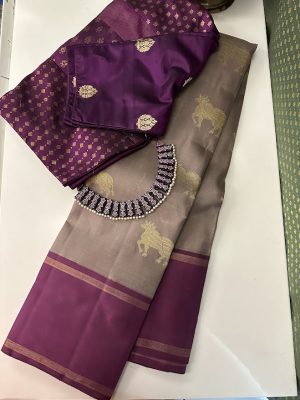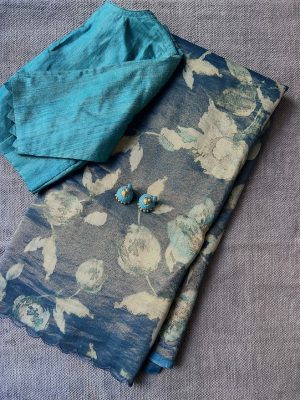This saree is a nod to tradition. The colours used in this Kanchipuram silk saree are honey mustard & coffee brown & meenakshi green – these colours are native to Tamil Nadu weaves and this particular combination is a classic. This handwoven, pure zari kanchipuram silk further features a benaras stripe border and small diamond buttas which add to its timeless appeal. The saree comes with an attached blouse
The saree has a simple yet classic seepu reku pallu and a coffee brown blouse piece. We have paired the saree with a green jwala blouse and silver choker necklace.
Care Instructions
Silk is made from the cocoon of silk worms. India has a rich heritage of silk weaving. Apart from Mulberry silk, India is known for producing tussar, muga and ahimsa silks. Some of these are wild and some of these are farmed commercially. Each of these silks has its own property when it comes to sheen, shine and wear. Being a natural fabric, silk does shed, wear and tear with age. However, caring for them ensures they have a long life. Silk Care & Wash
# We recommend air drying silks after every use. Silks do not require washing after every wear unless soiled.
# We recommend giving our sarees for dry cleaning for the first few washes.
# Silk sarees can be washed at home using a gentle detergent or soap nuts. Avoid soaking & scrubbing these fabrics. Any stains should be dry cleaned.
# Avoid tumble dry and instead line dry away from direct sunlight.
# Silk sarees should be regularly worn to avoid fraying. If kept in humid or dry spaces for long without wear, silks are likely to deteriorate. So wear your sarees well.
# If you are unable to wear them regularly, remove them and change folds from time to time. We do not recommend hanging them. If stacked, ensure there isn’t too much weight on the sarees.
# Avoid using naphthalene balls or other chemicals while storing silks. Heavy silks may be stores in muslin bags.
# If you can, roll them on wooden rods to store them wrinkle free. However, gentle folding works well too.
Buttas /motifs
One of the ways saree appeal is enhanced is by incorporating zari weaving along the body. The body may feature checks, stripes, tissue zari or buttas. Buttas are one of the common techniques used to enhance appeal. The beauty of buttas is that they come in a wide variety and one can never get bored. From simple coin, pavan & rudrakshams to intricate manga, mayil, chakram, yazhi, there is a huge variety to pick from. The size of the butta is also vital. Some sarees may feature larger motifs like animals, floral bouquets etc. Such sarees are prized for being unique & have a different appeal. Lastly, the spacing of the butta also has an impact on the final saree. We enjoy experimenting with buttas to create simple & heavy sarees.


